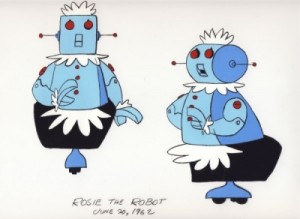 Consumers are looking for electronic devices that do many things, don’t care much about what platforms they use, like the convenience that cloud computing enables, and are bringing their own devices to the workplace for productivity, conference calls, and communication.
Consumers are looking for electronic devices that do many things, don’t care much about what platforms they use, like the convenience that cloud computing enables, and are bringing their own devices to the workplace for productivity, conference calls, and communication.
Accenture has studied the wired consumer and developed this infographic, which illustrates these four key findings.
Accenture says it’s “an open playing field” when it comes to consumer technology: there are many suppliers who can develop products and sell into this market, where consumers seem pretty agnostic relative to operating systems and even brands — as long as the devices operate smoothly and data flows quickly and seamlessly where consumers want it to go.
Accenture’s report was published this month timed with the 2013 Consumer Electronics Show. Many other reports were published last week, as well, describing various facets of the consumer electronics market.
Trends, Technologies & Ecosystems: Evolution of the Digital Home from Parks Associates describes the new connected home, with broadband services providing the consumer infrastructure for distributing content to the home and via mobile. As these speeds move quicker and quicker, there is even more opportunity to supply increasingly complex services where they live.
Increasingly, these services will be customized based on consumer preferences, where Parks says, “Providing personal recommendations is a growing feature of content services.” Verizon, Comcast, Swisscom, and ADT Security have entered the connected home management market, with smart energy and water controls. Energy monitoring has achieved savings near 17% in some homes, Parks found.
Multiple screens are also common in households, with time-shifted video common. Thus, Parks notes that 90% of pay TV customers in North America have access to TV “everywhere.” Furthermore, 20% of broadband users watched video on a mobile phone in the past 30 days.
Health Populi’s Hot Points: The Connected Home can play the role as a consumer’s medical home adjunct to her physician’s patient-centered medical home (PCMH). Broadband/wireless enables people to receive care, support, just-in-time messaging, and updates about loved ones’ health wherever people are. This is the vision of untethered health care, everywhere.
 I viewed a couple of smart refrigerators at #2013CES in Las Vegas, which could function in the future as supportive devices for people managing nutrition and food intake. Other connected home devices such as security systems (a la ADT, mentioned above) have begun to function as the new models serving the frail aging-at-home “I’m falling and I can’t get up” market segment. And smart car brands, globally, are all piloting applications to support peoples’ health, such as sensors embedded in steering wheels sensing driver stress and external sensors perceiving air quality for asthmatics in the car. UnitedHealth has launched a health TV network, and cable companies are experimenting with managing chronic conditions in the home via the TV set box.
I viewed a couple of smart refrigerators at #2013CES in Las Vegas, which could function in the future as supportive devices for people managing nutrition and food intake. Other connected home devices such as security systems (a la ADT, mentioned above) have begun to function as the new models serving the frail aging-at-home “I’m falling and I can’t get up” market segment. And smart car brands, globally, are all piloting applications to support peoples’ health, such as sensors embedded in steering wheels sensing driver stress and external sensors perceiving air quality for asthmatics in the car. UnitedHealth has launched a health TV network, and cable companies are experimenting with managing chronic conditions in the home via the TV set box.
And on January 8, 2013, RP-Vita, the health robot, received FDA clearance for managing telehealth. THINK: Rosie the Robot, pictured.
The Jetsons have come home for health.




 Interviewed live on BNN Bloomberg (Canada) on the market for GLP-1 drugs for weight loss and their impact on both the health care system and consumer goods and services -- notably, food, nutrition, retail health, gyms, and other sectors.
Interviewed live on BNN Bloomberg (Canada) on the market for GLP-1 drugs for weight loss and their impact on both the health care system and consumer goods and services -- notably, food, nutrition, retail health, gyms, and other sectors. Thank you, Feedspot, for
Thank you, Feedspot, for  As you may know, I have been splitting work- and living-time between the U.S. and the E.U., most recently living in and working from Brussels. In the month of September 2024, I'll be splitting time between London and other parts of the U.K., and Italy where I'll be working with clients on consumer health, self-care and home care focused on food-as-medicine, digital health, business and scenario planning for the future...
As you may know, I have been splitting work- and living-time between the U.S. and the E.U., most recently living in and working from Brussels. In the month of September 2024, I'll be splitting time between London and other parts of the U.K., and Italy where I'll be working with clients on consumer health, self-care and home care focused on food-as-medicine, digital health, business and scenario planning for the future...